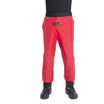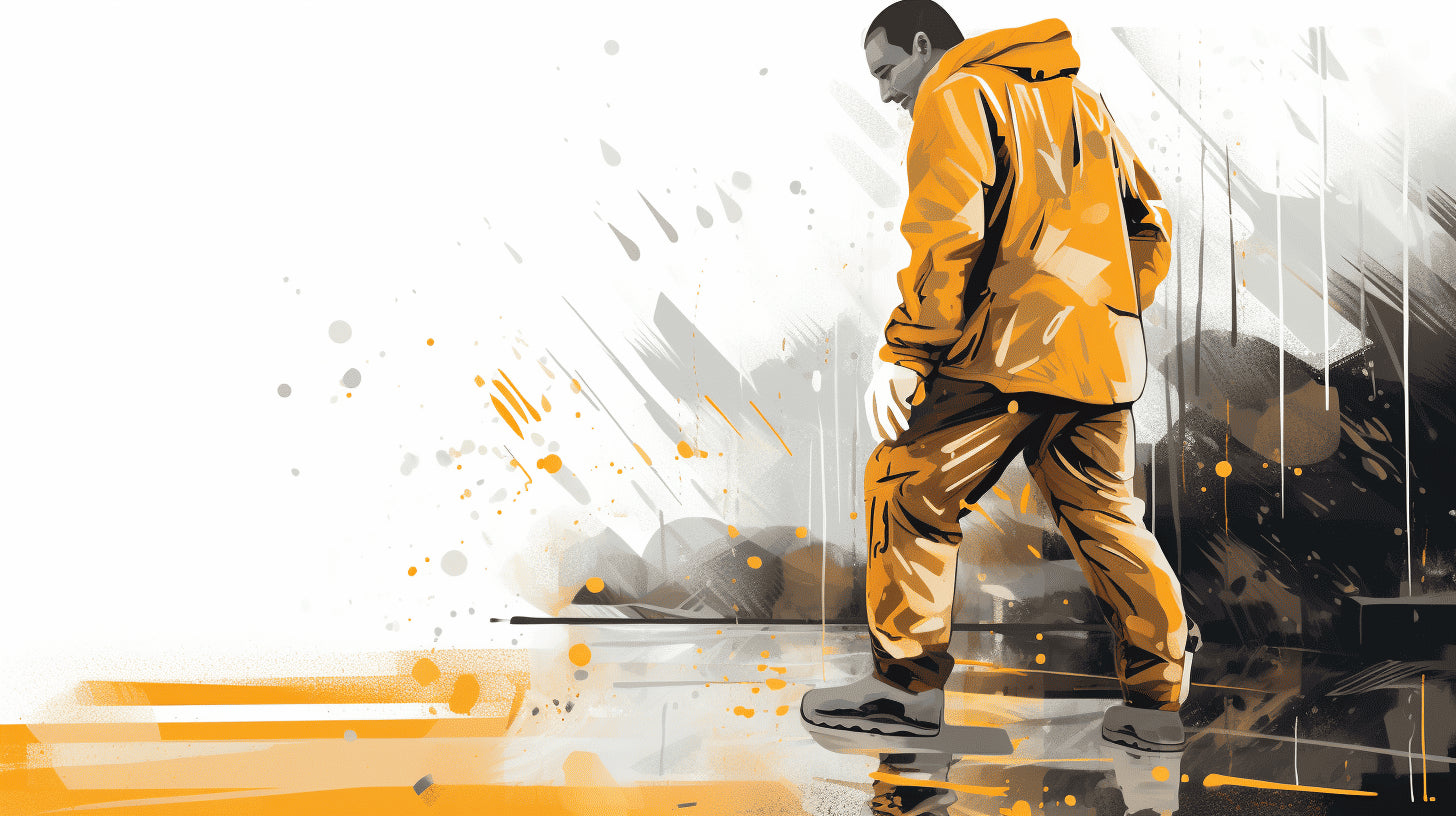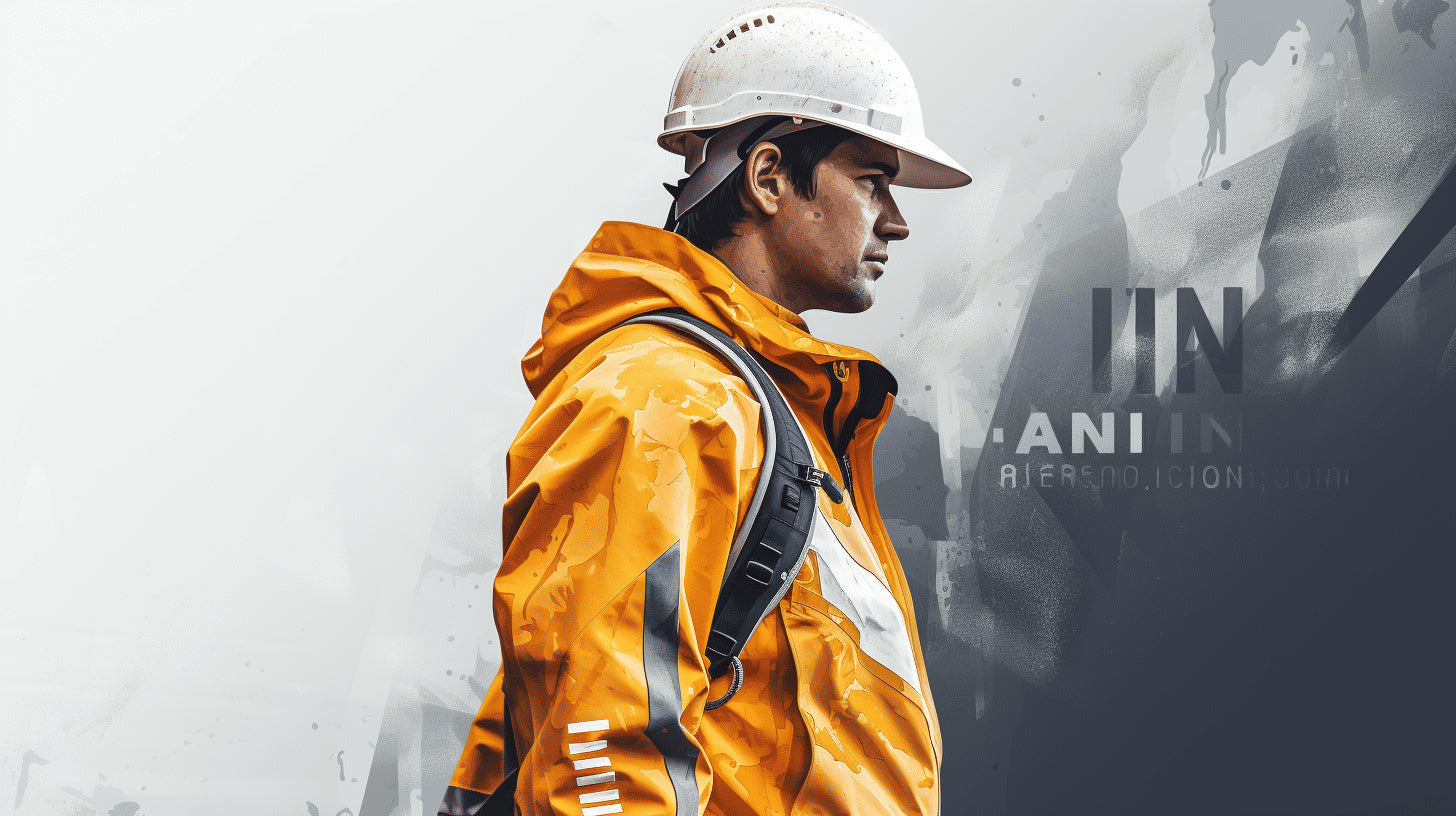As the saying goes, "Rain or shine, the work must go on." When you're in the construction industry, you'll know how literal that phrase can be. From the early drawing stages to the final structure, the construction process can't afford unnecessary delays. Weather, particularly rain, is one unpredictable factor that poses not just delays, but safety risks as well.
You might ask, can workers fully fend off these damp conditions while maintaining productivity? Absolutely! Here is where the significance of rain gear for construction workers steps into the picture, and this article aims to provide you with everything you need to know about it.
From understanding why such gear is essential, exploring the different types of rain gear available to key features to consider when picking the right kit for your workers, we've got all your queries covered. We'll even dive into how the global rainwear market looks like, uncovering its current value and highlighting advanced technologies, like Sentinel™ material.
It's time to equip ourselves with the knowledge that will keep us dry and productive, even during the rainiest days. Ready to know more? Let's dive in!
Importance of Rain Gear for Construction Workers
Rain or shine, construction work doesn't stop. Consequently, it's critical for construction workers to be equipped with safety gear suitable for all types of weather, including heavy rain. One such piece of equipment, often overlooked, is quality rain gear. Not only is it crucial for keeping workers dry during downpours, but it also plays a significant role in maintaining safety and productivity on the job site.
Protection from Harsh Weather
When weather conditions turn sour, quality rain gear becomes an invaluable ally for construction workers. This section unpicks the reasons why.
- Body Heat Preservation: Rain gear designed for construction workers is typically waterproof and insulated. These features prevent rainwater from soaking into clothing, keeping workers warm and preventing hypothermia risks.
- Comfort and Breathability: An important attribute often ignored when selecting rain gear is breathability. Quality rain apparel is designed to allow air circulation, reducing sweat and subsequent chill, enhancing comfort on the job site.
- Disease Prevention: Prolonged exposure to rainwater without proper protection can lead to various illnesses. When workers are well-protected, the chances of contracting colds, flu, and skin conditions reduce.
At this stage, you're likely convinced of the importance of rain gear in providing protection from harsh weather. Yet, there's more to it than that. Rain gear is also instrumental in promoting safety and productivity in a workplace, which we'll explore next.
Enhanced Safety and Productivity
Beyond protecting workers from inclement weather, quality rain gear helps enhance safety on the job site and can boost productivity. Here's how:
- Visibility: Rain can heavily impede visibility on a construction site. Rain gear often comes in bright colors with reflective elements, making workers more visible to others, decreasing the risk of accidents.
- Mobility: Good rain gear allows freedom of movement, so workers can perform tasks efficiently without feeling bulky or constricted.
- Productivity: When workers are comfortable and dry, their morale is high, which can significantly boost productivity levels. Let's face it, no one wants to work while soaking wet!
This breakdown of the importance of rain gear for construction workers brings to light the necessity of this often-underappreciated safety equipment. From battling harsh weather to enhancing productivity, rain gear proves to be a vital asset to any construction worker's wardrobe. So, whether you're overseeing a construction site or working on one, remember not to take your rain gear lightly!
Types of Rain Gear for Construction Workers
Working in the construction field isn't just about handling heavy machinery, overseeing intricate projects, and transforming blueprints into reality. It also involves bracing harsh weather conditions, including persistent, soaking rain. Fortunately, numerous rain gear options are specifically designed for construction workers, ensuring their comfort, safety, and productivity. However, not all rain gear offers the same level of protection, so it's critical to choose the right kind depending on your specific needs.
Rain Jackets
Construction rain jackets are more than mere clothing items; they serve as a protective shield. Designed to be waterproof and resilient, these jackets not only keep construction workers dry in the rain but also warm during winter, and they even offer a block against harmful sun rays. The utility and versatility inherent in their design make them a staple in the toolbox of any construction worker.
Waterproof Pants
Alongside rain jackets, waterproof pants are another key component of a construction worker's rain gear. With their water and mud resistant features, these pants provide an additional layer of protection, ensuring workers stay dry despite downpours. Bottom line: in an industry where productivity is king, soggy clothes should never be a setback, and waterproof pants could be just the solution you need.
Waterproof Boots
Let's shift focus towards the outdoor worker's best friend during rainy days: waterproof boots. Dealing with slippery surfaces and puddles is undoubtedly one of the biggest challenges when working in the rain, and this is where waterproof boots come in handy. They offer not only dry comfort, but also enhance safety with slip-resistant soles to prevent accidents.
Helmets with Face Shields
Finally, for comprehensive protection, helmets with face shields are a must. These helmets do more than protect the head from falling objects; their face shields offer additional coverage in rainy conditions, keeping the vision clear and unimpeded. This added layer of protection ensures that neither rain nor shine will hamper a worker's performance or compromise safety.
Just like how every blueprint details different component parts needed to complete a successful construction project, every construction worker should equip himself with the right rain gear to keep productivity high, regardless of the weather. Choosing the correct rain gear that suits your weather and work conditions not only boosts staff morale but is a crucial part of health and safety regulations, and is as fundamental to the job as any tool or piece of equipment. So remember, when the weather doesn’t cooperate, your gear should!
Features to Consider in Rain Gear
Choosing the right rain gear is not just about picking the first one you see on the shelf. There are several features to look out for to ensure that you get the most out of your purchase. Let's dive straight into it, shall we?
Durable Water Repellent (DWR) Technology
When you're caught in a downpour, getting soaked is almost the last thing you want. And this is where Durable Water Repellent (DWR) technology comes into play. Garments utilizing this technology aren't just water-resistant but almost magic in the way water just beads up and rolls off the fabric. It's like your personal force field against moisture!
Breathable Synthetic Fabrics
While dealing with the rain, another crucial factor to consider is comfort. After all, no one likes being stuck in a stuffy, non-breathable piece of clothing, right? That's where breathable synthetic fabrics, like nylon and polyester, come in handy. These materials allow your skin to breathe, preventing any discomfort, making your wet day less gloomy.
High-Visibility Gear
Now, visibility becomes a primary concern when it's raining, particularly for those working in hazardous environments. Rain tends to reduce visibility and might catch people off-guard. Therefore, it's essential to consider high-visibility rain gear that stands out even in the most challenging conditions, ensuring your safety isn't compromised.
Durability and Longevity
Finally, we all want a rain gear that’s reliable and durable, one that can withstand the test of time and the harsh elements. The last thing you need is for your gear to tear up in the middle of a storm. Therefore, looking into the durability and longevity of the material used in manufacturing the gear is non-negotiable.
Choosing the right rain gear is fundamental to staying dry, comfortable, and safe when Mother Nature decides to pour her heart out. By taking the time to consider these features, you'll be well on your way to selecting the gear that suits your needs perfectly. The rain doesn't have to spoil your day with the right rain gear on!
Global Rainwear Market
As we all know, weather patterns can be quite unpredictable. One minute you're enjoying the sunshine, and the next, you're caught in a downpour. If there is one component that has been integral in warding off such unanticipated weather changes, rainwear undoubtedly tops the list. The global rainwear market has been experiencing exponential growth, driven by the rampant fluctuations in global weather conditions and technological advancements in the textile industry. And guess what? The figures are expected to soar even higher in the coming years!
Market Value and Growth
Going by recent statistics, the global rainwear market stood at a whopping USD 3.84 billion in value back in 2022. Now, here comes the real kicker - it's projected to reach an astonishing $1,862.6 million by 2030! That's pretty impressive, isn't it?
The growth isn't accidental though. Fundamental factors such as increasing consumer awareness about fashion trends, technological advancements in fabric materials, and the rising demand for functional and durable rainwear are pushing this market to new heights. This burgeoning growth is providing ample opportunities for various brands to leave their mark in the textile industry.
Segmentation by Jackets
Among the various product segments in the rain-wear market, the "jacket" category is ruling the roost. It garnered the highest revenue share in the rainwear market, and there's a good reason why. Jackets offer both style and functionality, making them a preferred choice among consumers. They’re versatile, fashionable, and practical - properties that have propelled their demand in the market.
Sentinel™ Material
Innovation isn’t only confined to style and design in the rainwear market. It also includes the use of advanced materials that safeguard the user from potential hazards. One such technological marvel is Sentinel™ material. This material is known for its top-notch safety features against electric arcs and flash fires.
So not only does it keep the user dry during a downpour, but it also provides an added layer of protection from dangerous situations. Safety, coupled with the promise of dryness, makes Sentinel™ material stand out in the market, contributing significantly to the surge in the global rainwear market.
From these insights, it’s clear that the future of the global rainwear market is incredibly promising. As consumer needs evolve and technology advances, we can only expect more innovations and growth in this industry. So next time you're shopping for rainwear, remember, there's a lot more to a simple rain jacket than meets the eye!
Conclusion
Staying dry and comfortable in wet job site conditions is not just about comfort - it's a matter of safety, productivity, and health for construction workers. High-quality rain gear such as those handcrafted by Hurricane Raingear is truly an investment in worker safety. Their waterproof, breathable gear offers protection from the elements, while enhancing overall safety with features like reflective 3M striping. Additionally, the use of 100% North American materials and a commitment to customer satisfaction makes Hurricane Raingear a reliable choice for those prioritizing quality and durability in their rain gear. Don't let unpredictable weather conditions stand in the way of productivity and safety – invest in high-quality rain gear today. Weather the storm effortlessly with Hurricane Raingear.
Frequently Asked Questions
-
What are the essential rain gear items for construction workers?
The essential rain gear items for construction workers include waterproof jackets, rain pants, waterproof boots, rain hats, and waterproof gloves.
-
What features should I look for in rain gear for construction workers?
When selecting rain gear for construction workers, look for features such as waterproof and breathable materials, sealed or taped seams, adjustable cuffs and hoods, reflective strips for visibility, and pockets for storage.
-
Do I need to buy rain gear specifically designed for construction workers?
While it's not mandatory, rain gear specifically designed for construction workers often offers additional durability, reinforcement in high-wear areas, and functionality that meets the unique needs of construction work, making it a worthwhile investment.
-
How should I clean and maintain my rain gear?
Follow the manufacturer's instructions for cleaning and maintenance of your rain gear. Generally, it's recommended to hand wash with mild soap, avoid using fabric softeners or bleach, and hang the gear to dry. Proper maintenance will help prolong the lifespan and effectiveness of your rain gear.
-
Can rain gear be worn in other weather conditions besides rain?
Yes, rain gear can also be worn in other weather conditions such as snowy or windy conditions. The waterproof and wind-resistant properties of rain gear can help protect construction workers from various elements and maintain comfort throughout their workday.























Leave a comment
This site is protected by hCaptcha and the hCaptcha Privacy Policy and Terms of Service apply.